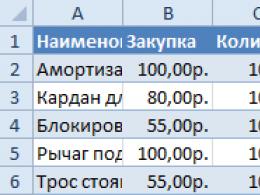What hotels in Èze have nice views? The village of Eze on the French Riviera is the residence of the Riquier family from Nice.
The village of Eze is located between Nice and the Principality of Monaco.
It is located at an altitude of 400 m above sea level.
The medieval village looks like an anthill. Its narrow shady streets wind around the hill.
This is an exclusively tourist place. There are numerous souvenir shops, Fragonard and Galimard perfume boutiques, famous Michelin restaurants and hotels in old chateaus.
The village is very green, decorative flowering front gardens are scattered all around, plants twine around the houses and hang from the ancient walls. Lanterns and signs are made in the style of the Middle Ages.
To see everything slowly, it is better to choose a cool sunny day.
Nietzsche (here he wrote "Thus Spoke Zarathustra"), Walt Disney, members of the Swedish royal family - until 1950 they owned the "Château Eza" (Château Eza), which now houses a trendy hotel with a restaurant.
The village of Eze has become a tourist attraction relatively recently.
Here is what it looked like in 1928:
"Eze is a small, closely molded on top of a cliff, which is almost one with it, a primitive gray town. The town is dead - there are almost no inhabitants in it. But the son of the Swedish king, engaged in literature, lives in one of the impregnable houses on stilts hanging over a cliff , and an eccentric American who placed a museum door in the finest carving in the rough stone walls of a Provencal house.
We went upstairs - how far you can see the sea from there! "(G. Kuznetsova. Grasse diary)
ATTRACTIONS OF EZ:
Of interest are not only the charming village streets, but also the towers of the old fortifications, and the ruins of the castle on the top of the hill, from where a panoramic view of the sea opens up to St. Tropez.
You can get there through the garden of exotic plants (Jardin botanique d "Èze). It contains mainly cacti, as well as agave and aloe. The garden is decorated with female statues by the modern sculptor Jean-Philippe Richard. Each sculpture has its own Name: Barbara, Celine, Charlotte, Chloe, Margo, Melisende, Marina, Isabeau, Matilda, Rose, Anais...
Opening hours:
January, February, March and October, November, December from 9:00 to 16:30
April, May, June from 9:00 to 18:30
July, August, September from 9:00 to 19:30
Entrance:
adults 6 euros, children under 12 years old - free of charge, group rate 2.50 euros (group with a guide from 12 people)
The oldest building in Eze Village is the Church of the Holy Cross (Chapelle de la Sainte Croix) built in 1306 in neoclassical style. It can be called the dominant of the village, because. its bell tower cannot be overlooked.
Another attraction of Eze is Nietzsche's Trail. This is a mountain footpath, quite steep, connecting Eze-sur-Mer ("lower" Eze) and Eze Village.
HOW TO GET TO EZ:
From NICE to Eze by bus 82 "Nice - Plateau de la Justice" :
Mon-Sat 6:30, 7:00, 8:00, 9:00, 10:00, 11:00, 12:00,
13:30, 14:00, 15:00, 16:10, 17:10, 18:30, 19:10
Sun and holidays 8:30, 9:45, 10:30, 11:00, 11:45, 12:15,
14:35, 15:30, 16:05, 17:00, 17:35, 18:30, 19:20
Return from Eze Village to Nice:
Mon-Sat 7:12, 8:15, 9:02, 10:00, 10:47, 12:10, 12:47,
14:17, 15:25, 15:52, 17:30, 18:07, 19:07, 19:40, 19:57
Sun and holidays 9:07, 10:22, 11:12, 11:42, 12:27,
12:57, 15:17, 16:12, 16:47, 17:42, 18:37, 19:27, 20:02
Bus 82 leaves Nice from the "Nice-Vauban" stop. Stop in Eze - "Eze Village".
Travel time is approximately 40 minutes. The bus goes along the mountain road (Moyenne Corniche). Stop in the village just behind the bridge.
bus 82.
Bus 112 "Nice - Eze Village - Monaco" follows the same route.
From "Nice-Vauban":
Mon-Sat 7:00, 9:00, 11:00, 14:00, 16:10, 18:30
From "Eze Village":
Mon-Sat 8:15, 10:10, 12:10, 15:25, 17:30, 19:40
The bus does not run on Sundays and holidays.
The route and the latest timetable for bus 112.
If you arrived in the "lower" Eze (Eze-sur-Mer, Eze-sur-Mer or Eze Bord de Mer) by train or bus 100 (Nice - Monaco) and want to get to Eze Village, then use bus 83.
From the train station "Gare SNCF Eze":
9:59, 11:04, 12:09, 13:54, 14:54, 16:04, 17:14, 18:19
The bus goes back to the sea from "Eze Village":
9:25, 10:30, 11:35, 12:40, 14:25, 15:30, 16:40, 17:50
The bus runs every day. Travel time 15 - 20 minutes.
Route and latest timetable
The Cote d'Azur of France is beautiful because many of the most beautiful places are located very close to each other. Traveling by train from Nice towards Monaco, you can get off at almost every stop and explore amazing places. After resting and admiring the beauties of the town of Villefranche-sur-mer, we went further. We boarded the train again towards Italy and after one stop got off at the Eze station. Here on a high mountain is one of the oldest villages in the region. But first, we had to get to her.
The so-called "Nietzsche Trail" leads from the station to Ez. The famous philosopher was very fond of going down to the sea along this road and admiring the stunning views of the coast. However, we had to climb this path. And this is not an easy task, especially in hot weather. At first, it seemed to me that literally around the next turn was the village we needed.

After about 15 minutes, I was already quite tired and decided to ask the people walking towards me whether it would take me long to climb. I expected to hear that I still had five minutes left at most. What was my surprise when they told me that there were still about 40 minutes before the end of the journey. But there was nothing to do, since we started to rise, we had to continue. As a result, we mastered Nietzsche's Path in about an hour and a half. We went upstairs so tired and exhausted that there was no time for sightseeing.
Naturally, at first we decided to have a little rest in a cafe and gain strength. Èze is full of cute restaurants serving traditional Mediterranean dishes. Prices for them, as elsewhere on the Cote d'Azur, are quite high. Moreover, Eze is very popular with tourists.

This village was founded before our era and at different times belonged to the Greeks, Phoenicians, Romans and Moors. The name of the town is also associated with the name of the ancient Egyptian goddess Isis. In the 14th century, Eze became part of the County of Savoy. Fortifications were built in the village, located on a hill with an excellent overview of the area. Later, the fortress was destroyed by the French king Louis XIV. Only fragments of the fortress walls and gates through which you can get to the Old Town have survived to this day. In 1860, Eze, together with neighboring settlements, passed to France.
Since the 19th century, when the Côte d'Azur became a popular and very lively resort, Eze has become an open-air museum of medieval life.

The fact is that small stone houses have been preserved in their original form from the Middle Ages. Now the authorities are carefully monitoring the maintenance of the uniqueness of the village. The center of the town is completely pedestrian, as it is impossible for a car to drive through some lanes, they are very narrow. Many of the premises have been converted into private art galleries and gift shops. In addition, in the very center of the town there is a paid exotic garden in which a wide variety of cacti are grown.

From the Middle Ages, the chapel of the Penitent Sinners of the White Brotherhood has been preserved, the purpose of which was to help the sick, especially lepers. Inside you can see a crucifix with a smiling Christ.
And on a small square near the Old Town, a later church of the Assumption of the Virgin has been preserved. According to legend, it was in its place that the ancient temple of Isis stood. At the end of the 18th century, an orange baroque building appeared, which can be seen today. Inside the cathedral is kept part of the Egyptian cross.

There is an excellent observation deck next to the temple.

In addition, outside the walls of the Old City, you can visit the museums at the Fragonard and Galimard perfume factories. At certain hours, the groups are shown how the factory works, what equipment is used to produce perfumes. At the end of the tour, you can visit a shop selling local products. In addition to perfumes, there are also various scented oils, shower gels and soaps.

Now the life of the village is completely subordinated to tourists. And once at the very beginning of the development of the resort, Eze was not only a stunningly beautiful, but also a secluded place.
Here, for almost twenty years, the great philosopher Friedrich Nietzsche lived, who wrote the famous work “As Zarathustra Spoke” in Eze.
George Sand was also fascinated by the beauty of the village when she stopped here on her way to Nice. Now, in my opinion, the charm of this place is spoiled by huge crowds of people who do not always fit within the walls of the Old City.


When it was time to head back, we started looking for a bus stop. Because I didn’t even want to think about the fact that I would also have to go down the Nietzsche path back and then go to Nice by train. It turned out that the buses run with great interruptions, and the bus to Nice arrived about an hour later, when a lot of people had already accumulated at the bus stop, returning to their hotels after visiting Eze. I had to go in a crowded car, however, the stunning views of the coast that opened from the windows of the bus brightened up the road a little.
In general, I think, in order not to spoil the impression of a cute medieval village, you need to come here early and by bus, and after exploring the Old Town, you can take a walk along the Nietzsche trail down to the Azure Sea.
You can make another exciting trip on your own: Eze village - Friedrich Nietzsche trail. Eze Village has become widely known thanks to Friedrich Nietzsche (Friedrich Wilhelm Nietzsche) and the eponymous scenic route to the Mediterranean Sea from the village. It was here that the writer wrote his work "Thus Spoke Zarathustra". Eze can be reached from Nice in two ways: by bus and by train. However, they stop fundamentally in different places: on the mountain and at the foot of the mountain, respectively. It was decided to go by bus, and then go down to the railway station.
Driving up to the village by bus, we noticed a picturesque bridge stretching in the mountains between ravines. A few minutes walk from the bus stop back towards Nice, and you can take your time to appreciate all the beauties of this place and admire the views of the hill on which the village is located.
According to some sources, the first buildings in this place date back to the 6th century BC. The village occupies a strategically important place, it offers an excellent view of the surroundings. In this regard, in different periods of time, she translated from one hand to another. Separate ruins of a medieval castle are still preserved to this day.

Here at any time of the year you can meet crowds of tourists from all over the world. Since we arrived on December 31, there were not very many people and it was possible to calmly walk along the narrow streets of the village.

Despite the end of December, the facades of the buildings are picturesquely twined with bright and beautiful flowers.

The village itself is not very big and you can safely get around it in an hour along the picturesque streets.

It must be admitted that this place looks very unusual and fabulous.

The entrance to some adjacent territories is closed with bars, as hotels are located behind the fences.

Near the village you can find a sign: Village of Eze - Friedrich Nietzsche's path (Chemin de Nietzsche), along which Friedrich Nietzsche liked to walk to the sea.

And here is the path itself, along which we decided to go down to the coast.

Away from the paved walking route, the sound of water was heard. We decided to go and find out where he came from. It was a waterfall! Not marked on our map.

Walking along the path, one can quote the words of the writer: “Only those who have felt fear in their hearts have courage; who looks into the abyss, but looks with pride in his eyes. — Friedrich Nietzsche, excerpt from Thus Spoke Zarathustra.

Going down, we were able to appreciate the beauty of the landscapes of these places. Not far from the place of descent is the railway station, from which you can return to Nice.
Still, Nietzsche was a strong man. It's one thing to go down the mountain to the sea, and quite another thing to climb back to the village! 🙂

In more detail, you can appreciate the trip to the village of Eze in ours.
Friends! Do not put off discovering new and beautiful places for yourself until later, until better times. Take advantage of our Airbnb invitation and get €29 credited on your first booking as a gift!

Find out the best prices for flights from your city and accommodation in the form below.
Plan and realize the trip of your dreams!!!
Add some sun and greenery to these short winter days? I want to tell you about one beautiful place I saw a couple of years ago on the Mediterranean coast of France. The ancient and very beautiful village of Eze is located 12 kilometers from Nice, in the Alpes-Maritimes department of the Provence-Alpes-Côte d'Azur region.
Sometimes Eze is called a town, and yes, it is a medieval town, but in the realities of the modern world, it is a village. Although located in a picturesque place of the French Riviera. They also make spirits there. You can look at beautiful landscapes and learn more under the cut.
I have already shown in LiveJournal landscapes from the village of Villefranche-sur-Mer, taken on the same day on the way to Eze.
2. Map of this region with Eze location:

3. Actually, as part of that bus tour, we were brought on the way from Nice to Monaco to the perfume factory museum, as is usually the case - business on tourists, nothing personal. But first, let's look at the surroundings, because it's worth it.

4. Eze is divided into two parts: the old mountain village of Eze and the seaside region of Eze-sur-Mer ("Eze on the sea"). The height difference between them is about 400 meters. The old part of Eze is connected to the sea by a narrow path, along which the philosopher Friedrich Nietzsche liked to walk daily and enjoy the beautiful landscapes, who lived here for almost two decades and worked on the novel Thus Spoke Zarathustra. Today, the "Nietzsche Trail" (Chemin de Nietzsche) is a steep mountain climb over stones and in some places along stony steps, which promises a good overview of beautiful landscapes. Nietzsche spent two hours a day descending and ascending:

5. Sheltered from the sea winds by the spit of Saint-Jean-Cap-Ferrat (pictured left), Eze has retained a favorable microclimate for lush Mediterranean vegetation.

6. The distances here on the map are small - only 6 km to Monaco, 16 to the Italian border:

7. The road from Nice to Eze is picturesque. It goes quite high up the mountain, and below - small houses. Yachts, boats and giant liners sway on the calm surface of the sea, everything around breathes with calmness and tranquility. And we are going higher and higher in the mountains, contemplating the tiers of retaining walls with drainage systems. Sometimes the abyss is so close that you involuntarily recoil from the window:

8. At one time, on the way to Nice, it was in Eze that the writer George Sand stopped, who was very impressed by the beauty and picturesqueness of this corner of France. This small village was also appreciated by the American animator Walt Disney who had a rest here.

9. We continue to climb the mountain. Every more or less flat meter of land is used for life and work:

10. The roads are winding and sometimes a big bus can't go through the turn on one try. The map is not exactly this place, but gives a general idea:

11. The pink and ocher facades of the villas, immersed in lush vegetation, among which banana trees grow, stand out against the backdrop of the sea. Wisterias, jasmine and bougainvillea make their way from under the balustrades and gates of private estates.

12. Lemon, orange and tangerine trees, on which the small Eza tangerines, famous for their unique taste, grow, give the streets a unique fragrance. In general, the feeling that you are in some kind of bright future of mankind:

13. Population - about two and a half thousand people. Although it seems that more - so many interesting buildings here. By the way, there is one tourist attraction near the perfume factory - driving a Ferrari, on your own or with a driver. 15 minutes of self-taxiing in the presence of a caretaker, something in the region of 50 euros. Half an hour - 100 euros. We have not ridden, but they say that the suspension is very stiff and a person feels every smallest pebble on the road - even though the roads are gorgeous. The seats are uncomfortable and hardly adjustable. The photo is not a Ferrari, of course:

14. I have shots here not quite in chronological order, rather in thematic order, so as not to be scattered in the course of the story:

15. Let's get back to our bus going to Eze. Here, in the window, a fabulous view of the old part of the village-town appeared:

16. This ancient village with well-preserved medieval architecture looks like an eagle's nest hanging over the peninsula of Saint-Jean-Cap-Ferrat. But, alas, we are not here.

17. From here, from a height of about 400 meters above sea level, the picturesque Mediterranean coast opens up, and on the clearest days, when there is no haze, they say you can even see the famous island of Corsica. I liked the texture of the tree bark:

18. There are two perfume factories in Eze - Fragonard and Galimard. The distance between them is about half a kilometer, each of them accepts tourists, introduces them to the process of compiling perfume compositions and invites them to visit a perfume shop. A large boutique with Fragonard perfumes and cosmetics, has existed since 1926.

19. So why Fragonard? In the town of Grasse in the south of France, a famous artist named Jean Honore Fragonard was born in 1732 and lived. He was a student of the famous Jean-Baptiste Chardin, and then Francois Boucher. After moving to Paris, Fragonard became famous for his light and playful paintings. The French Revolution, which broke out in 1789, devalued the artist's work in the eyes of his contemporaries, along with the brilliant, pampered noble culture of the 18th century. The general public now knows such canvases by Fragonard as "The Swing", "Stealth Kiss", etc. Grateful descendants immortalized his name, naming the city boulevard after him. In one of the houses on this boulevard, a factory for the production of essential oils from rose petals was opened in 1926. According to French traditions, the name is tied to the place - this is how the factory got its name.

20. The history of the establishment of the enterprise itself is as follows. On the eve of World War I, businessman Eugène Fuch was captivated by the charm of the Côte d'Azur and fell in love with the local world of fragrances. Thanks to the peculiarities of the microclimate in these places, it was possible to collect large crops of aromatic plants. He decided to create a new type of perfume trade: to sell it directly to an ever-increasing number of customers.
The heir of the founder, Jean-Francois Coste expanded and modernized production. Cost was a passionate collector, thanks to him collections of paintings, costumes, costume jewelry, vintage perfumes and related accessories were collected. And the ancient means of production exhibited throughout the territory:

21. Now Fragonard is an enterprise on the Mediterranean coast between Cannes and Monaco - in Grasse (historical factory) and Eze (laboratory factory). And two more perfume museums in the center of Paris - at the Napoleon III Hotel on Rue Scribe and the former theater building on Boulevard des Capucines. In Eze, only tiny old factories remain, where only soap, shampoos and ready-made perfumes are bottled in small souvenir bottles. Now the factory is managed by the daughters of Jean-Francois Costa - Francoise and Agnes, who are already the third generation of the founder's family.

22. In the premises of the museum-factory there are also unusual old apparatuses that were used earlier to make perfumes:

23. In the cabinets at the entrance, there is a collection of antique bottles that were made especially for perfumes, beautiful and rare specimens, they were sometimes decorated with precious stones and paintings:

24. On the tour, they talk about the natural ingredients that are used in perfumery products, as well as about ancient production technologies. The main ingredients, including lavender, jasmine and mimosa, grow in Provence, but some herbs and spices must be imported from other countries. For example, oranges and lemons come from California (USA), bergamot from Calabria (Italy), and sage and coriander from Russia:

25. With the development of laboratory technology, they learned how to make essences. Without them, a perfumer cannot take a single step: sometimes dozens or even hundreds of various components are required to create the desired fragrance. Natural ingredients have always been the basis of perfumery, although in our technologically advanced time there are more and more synthetic aromatic substances.

26. Although, the decorative "organ" for compiling fragrances still stands (photo on the top left). The symbol of Eza is the Phoenix bird, and the motto “Isis Moriendo Renascor” in translation means “In death I am reborn” - alchemical transmutation, something akin to perfume witchcraft...

27. Visiting the factory only with a guide. There is no need to wait for the group, even if you come alone, the tour will still be held, it is free. Quote from one of the visitors: "All sorts of interesting things were said: for example, that from a ton of rose petals, only one bottle of the corresponding essence is obtained. Or, well, from a megaton of petals, one box of cologne is obtained. In general, a very small amount of something comes out of a large amount of something something else. That's exactly what I remember."

28. In the photo below - a worker in a soap shop. All employees work in glass-enclosed rooms so that foreign odors do not interfere. A long soapy "sausage" crawls out of the blue unit, which is then molded with a special press:

29. From almost finished soap, the seams from the mold are manually sewn off, and the details are also hand-painted. It's time for us to soap up and flush out of here according to the evacuation plan:

30. A visit to the factory does not last long, about 20-30 minutes. And as it should be at the end of the visit, they lead to a large hall. They will briefly share how a synthetic smell differs from a natural smell, and what is the difference between perfumes and toilet water - in the first, the content of oils, extracts and other natural components is 35%, and the rest is alcohol and water, perfume water contains them by 10-12% , and in toilet water no more than 6%.

31. Perfumes are divided into four broad categories: natural, fruity, floral and oriental. It is believed that gold-plated metal bottles look expensive. There are also several counters with soaps and creams for face and body.


33. This is all that they showed us then in Eze and I really regret that they did not bring it to the old part. But I will still give a small historical digression. The photo had to be taken from Wiki.
The first traces of human settlement in this area date back to the 20th-21st centuries. BC. The current village, founded back in 600 BC. Ligurian tribe, is considered one of the very first relatively large settlements on the Cote d'Azur. In the 1st century A.D. The Romans who came here built their fortifications. Perhaps this is where the name Eze came from (from the Latin Avisium - fortress). But it is also suggested that the name Eza may be associated with the name of the ancient Egyptian goddess Isis (Isis), whose priests could settle nearby, since there were colonies of the ancient Phoenicians in these parts.
The village belongs to the so-called. "eagles' nests" - settlements characteristic of these places in the period after the collapse of the Roman Empire. The inhabitants built fortified stone towns on the tops of the mountains to protect themselves from sudden attacks by Saracen pirates. However, the first settlements appeared here long before the arrival of the Romans. On the coast and in the mountains, Ligurians lived in these places, then the Greeks, then the Phoenicians. At a later time, this territory belonged to the Romans and Moors (about 80 years, until Guillaume I of Provence expelled them in 973).

34. Here in the XIII century. the Guelphs arrived, adherents of the Pope, after the victory over them of the Ghibellines - the soldiers of the emperor. Here they settled and took up agriculture, building in the XIV century. church. It is still considered the oldest building in Eze - the Church of the Penitent Sinners of the White Brotherhood (Chapelle des Penitents Blancs) or as it is also called - the Church of St. Cross (Chapelle de la Sainte Croix), built in 1304. The Brotherhood exists to this day. Then, in ancient times, the White Brotherhood saw the goal of its activity in helping the lepers and the unfortunate, which is the goal of their activity to this day. Until 1388, Eze was part of Provence, then the possession of the Dukes of Savoy. Here you can see the ruins of an old fortress that the dukes built in Eze. It was of great strategic importance due to its proximity to Nice.

35. In the XVI century. the rights to Eze were disputed by the Prince of Monaco, Jean-Baptiste Grimaldi, nicknamed the Fierce, and King Francis I of France. In 1543, the troops of the Turkish invader Khairuddin Barbarossa invaded here, and in 1706, under Louis XIV, during the War of the Spanish Succession, the surrounding Eze was destroyed fortress walls. The city gates are the only remaining part of the former fortifications. Now it is the only entrance to the old part of the village. The Gate of the Moors, built in the 14th century, is adorned with two watchtowers, which are now heavily tilted. The architecture of these towers is original and of historical value, although only hinges remained from the doors leading to the tower. After centuries of wars and disputes, in 1860 the village of Eze finally became part of France.

36. Its streets with vaulted houses, where numerous shops of artists and artisans meet, are the perfect backdrop for the historical festival "Eze of old" held annually at the end of July.
The fabulous appearance that is visible today, the village acquired in the Middle Ages, around the 10th century. Textured masonry of stone houses, narrow picturesque stepped streets meandering among them. Almost every house has many interesting details and features that are not like others. But you need to be prepared for the fact that there will be a lot of steps.

37. Other attractions include the cemetery where the famous French actor Francis Blanche is buried, a small square with a fountain in the Italian style of 1930. The main street in Eze - Principal (rue Principale), recalls the Italian origin of the town. The drawings on the walls of the houses on this street tell about the crafts the former owners of these houses were engaged in and what position they occupied. Today there are art galleries, exhibition halls and shops. There is also Eze Castle - a not so old building, it was built in 1920 by the Swedish prince Guillaume. Until the middle of the last century, it was something like a summer residence of the Swedish royal family, until 1950 members of the royal family came here every year, and today everyone can relax in the royal apartments - a small hotel with luxurious rooms is located in part of the castle.

38. At the top of the village, on the ruins of an ancient castle, the famous Exotic Garden with rare tree species was founded in 1949, where you can also see hundreds of different types of cacti. The main attraction of this place is a 13-meter cactus weighing a ton. Entrance to the garden is paid. In Eze there are alleys with expressive names - Cicadas, Carnations or Provence. In the photo - the terraces at the foot of Eze.

39. One of the pearls of the settlement is the Church of the Assumption of the Blessed Virgin Mary, built in the 18th century. Baroque style by Italian architect Antonio Spinelli. An Egyptian cross is kept here, and therefore there is an opinion that the name of the village is associated with the name of the ancient Egyptian goddess Isis.

From Nice - highway A8, exit 57 - to "La Turbie", then La Turbie towards the village of Eze: RM45 (the path will pass along the "Grand Corniche", i.e. along the most picturesque and spectacular road). At the foot of the cliff, on which the medieval village of Eze is located, there is a fairly spacious parking lot.
"Three Cornices"
Between Nice and the Italian border, in addition to the A8 highway, there are three cornice roads - Grand (Grande corniche), Middle (Moyenne corniche) and Small, or low (Basse corniche). Eze can be reached by car along each of them. The best views of the Côte d'Azur - from the border with Italy to, as they say, Saint-Tropez in clear weather - open from the Great, the highest cornice.
There are several hiking trails between the three cornices of Eze: the "Nietzsche Trail" connecting the village of Èze (Middle Cornice) with the seashore (Eze-sur-mer and Low Cornice); A path connecting the Low Cornice through the Middle Cornice with the Great Cornice; as well as the Path leading from the Middle to the Big Cornice. You can go on them only if you are confident in your good physical fitness. For example, the Nietzsche Trail is a very steep way up and in some places you have to literally climb without feeling your legs. So it's an amateur pleasure.
If you are a lover of cacti, modern art and stunning views, then this is the right place for you.
The village of Eze Village is located on a high rocky hill, somewhere in the middle of the route between Monaco and Nice.
Russian travel agencies always take tourists past it, but rarely stop, saving time for a longer visit to Nice or the Principality of Monaco. Usually the only thing they say when the bus is speeding down the autobahn is: "Turn your head right/left and look at this wonderful exotic old village." Everyone hurriedly grabs the cameras, but the village ... has already disappeared in the distance.
This time we were "lucky". At the foot of Eze Village there is a branch of the Galimard perfume factory, where tourists are strongly recommended to buy perfumes, creams and soaps.
Guides usually cooperate with such companies, having a certain penny from the proceeds. Therefore, for the second we were organized a trip to a cosmetic factory, but for the first - a tour of the village.
In fact, Eze Village is one of the top most visited places in Europe. It is no coincidence that on this small piece of rock there are hotels in 5 stars and Meschelin-starred restaurants.
We start hiking up - more than 400 meters above sea level.
At first, there is an ordinary asphalt road, which suddenly ends with an old paving stone.
The road forks. To the right - begins Eze Village. And to the left towards the sea, the rocky path of Nietzsche departs.
Friedrich Nietzsche, during his stay in Eze, took walks along this route, which gave the trail its name.
The trail connects Eze-sur-Mer, located by the sea, with the historical part of Eze, located on top of a 400-meter mountain.
The trail is long, winding and incredibly rocky. I was in moccasins, but a hundred meters was enough for me to understand the futility of the walk. Instead of admiring the beauties of the area, I only thought about: "Will the medical insurance cover a broken leg on the Nietzsche trail or will this "extreme" not be an insured event?" This is how ordinary people differ from philosophers. Nietzsche, unlike me, while walking along the paths in Eze, pondered his work "Thus Spoke Zarathustra",
We keep going higher and higher. We are suddenly met by a statue of a Kazakh batyr.
As our guide told us, one of the Kazakh businessmen is engaged in the hotel and restaurant business in this elite place. Judging by the expensive cars, quite successfully.
Our goal is an exotic plant garden, which is located on the very top of the cliff, where once there was a medieval fortress. So we are going higher. We walk through narrow streets lined with uneven and already polished and slippery paving stones.
The road does not wind in a serpentine, it is chaotic, winding and diverging. I would not have found the way on my own and would definitely get lost even with a map. But we were led by an escort guide from a travel agency. A very tall young man who "grew" his legs and just walked, and we ran after him. We barely had time to grab amazing views and local exotic pictures with a camera.
It is he who is waiting for us and still counts like chickens, suddenly someone got lost and lost,
To the left of the square is the Church of the Assumption of the Blessed Virgin Mary, built in 1786 by the Italian architect Antonio Spinelli.
Along the path we meet the first of 15 statues of girls - "Goddesses of the Earth", made by the French sculptor Jean-Philippe Richard in 2004.
They are made from a mixture of bronze, crystals and earth, which the sculptor called "star dust".
This is Marie.
The rest adorn the exotic plant garden.
I was in different "cactus" exotic gardens in Europe. As a cactus lover who has been collecting them since school, I can safely say: "This is the most intense and incredibly diverse cactus and succulent garden." It's not just prickly pear, "golden balls" and agaves, as in many other gardens.
Moreover, almost all of them bloomed.






